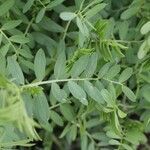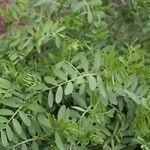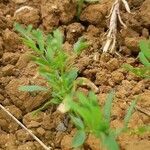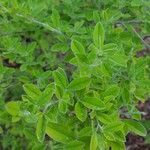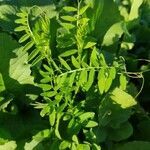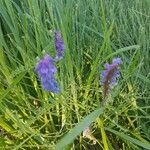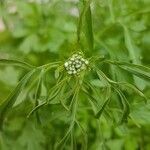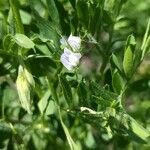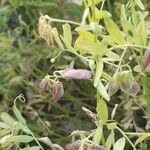Plants 10-50 cm tall. Stem branched from base, pubescent. Leaves: stipules 3-7 mm, white villous; leaflets sessile, 4-12-paired, 6-20 × 2-5 mm, both surfaces villous. Raceme 1-3-flowered; rachis densely white hairy. Calyx densely villous. Corolla white or blue-purple, 4.5-6.5 mm. Ovary shortly stalked, glabrous. Legume yellow, oblong, inflated, 10-15 mm. Fl. Apr-Sep, fr. May-Sep. 2n = 14, 21, 26.
